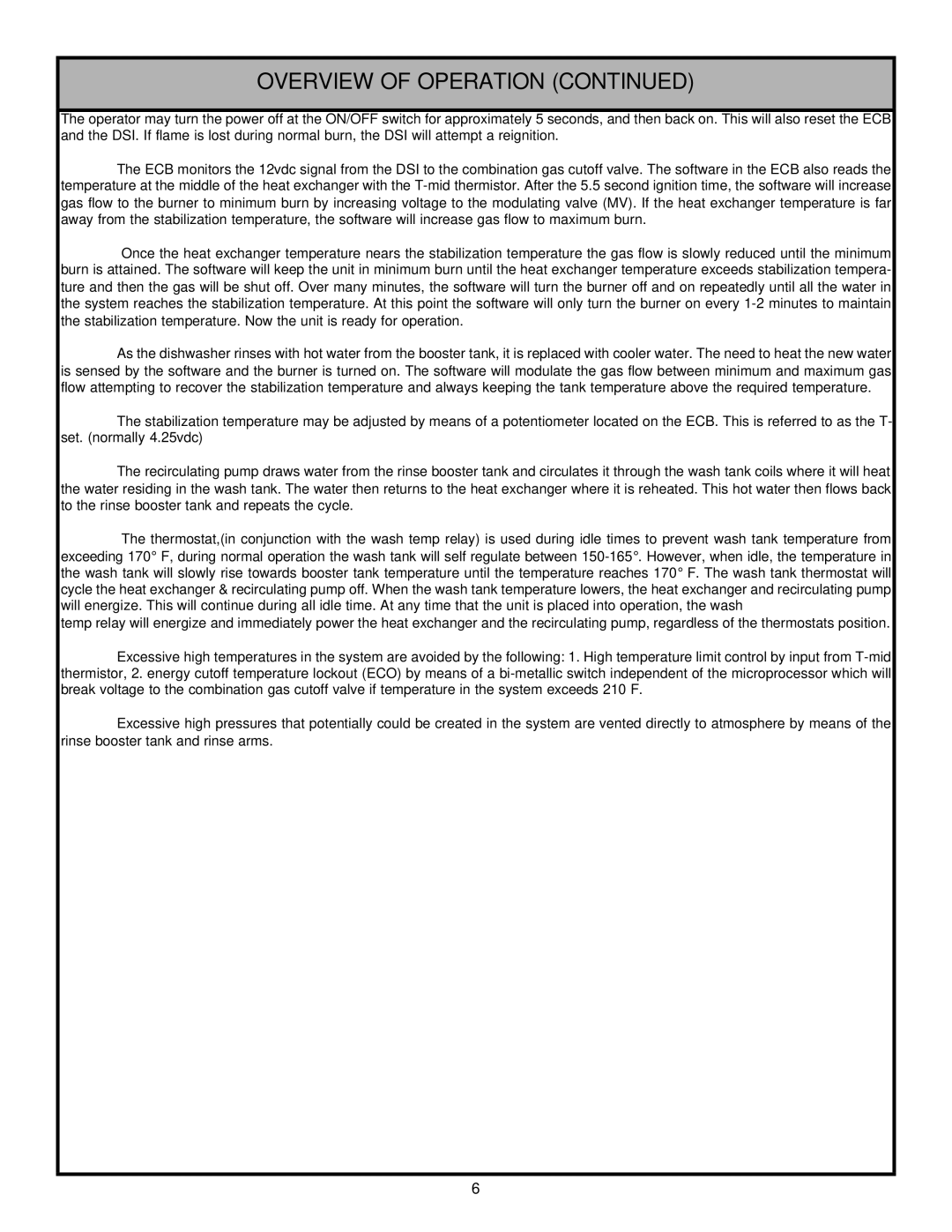
OVERVIEW OF OPERATION (CONTINUED)
The operator may turn the power off at the ON/OFF switch for approximately 5 seconds, and then back on. This will also reset the ECB and the DSI. If flame is lost during normal burn, the DSI will attempt a reignition.
The ECB monitors the 12vdc signal from the DSI to the combination gas cutoff valve. The software in the ECB also reads the temperature at the middle of the heat exchanger with the
Once the heat exchanger temperature nears the stabilization temperature the gas flow is slowly reduced until the minimum burn is attained. The software will keep the unit in minimum burn until the heat exchanger temperature exceeds stabilization tempera- ture and then the gas will be shut off. Over many minutes, the software will turn the burner off and on repeatedly until all the water in the system reaches the stabilization temperature. At this point the software will only turn the burner on every
As the dishwasher rinses with hot water from the booster tank, it is replaced with cooler water. The need to heat the new water is sensed by the software and the burner is turned on. The software will modulate the gas flow between minimum and maximum gas flow attempting to recover the stabilization temperature and always keeping the tank temperature above the required temperature.
The stabilization temperature may be adjusted by means of a potentiometer located on the ECB. This is referred to as the T- set. (normally 4.25vdc)
The recirculating pump draws water from the rinse booster tank and circulates it through the wash tank coils where it will heat the water residing in the wash tank. The water then returns to the heat exchanger where it is reheated. This hot water then flows back to the rinse booster tank and repeats the cycle.
The thermostat,(in conjunction with the wash temp relay) is used during idle times to prevent wash tank temperature from exceeding 170B F, during normal operation the wash tank will self regulate between
temp relay will energize and immediately power the heat exchanger and the recirculating pump, regardless of the thermostats position.
Excessive high temperatures in the system are avoided by the following: 1. High temperature limit control by input from
Excessive high pressures that potentially could be created in the system are vented directly to atmosphere by means of the rinse booster tank and rinse arms.
6
